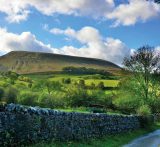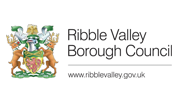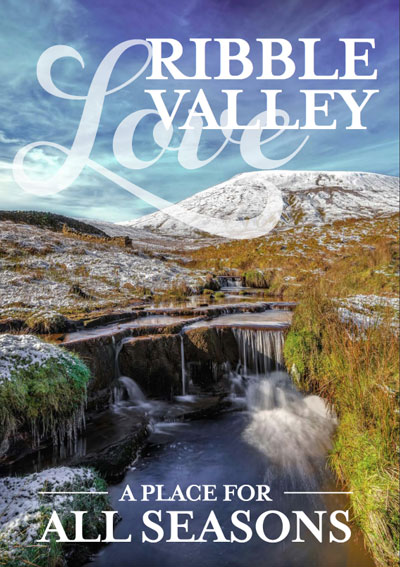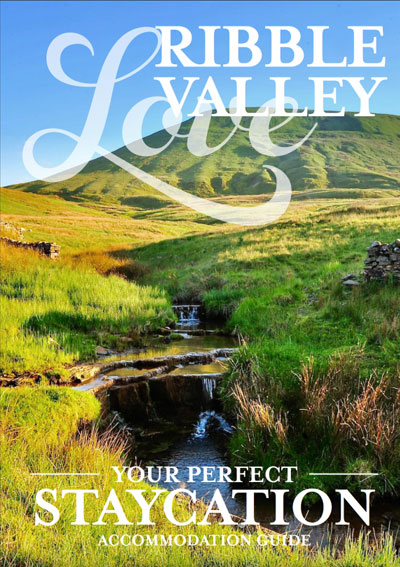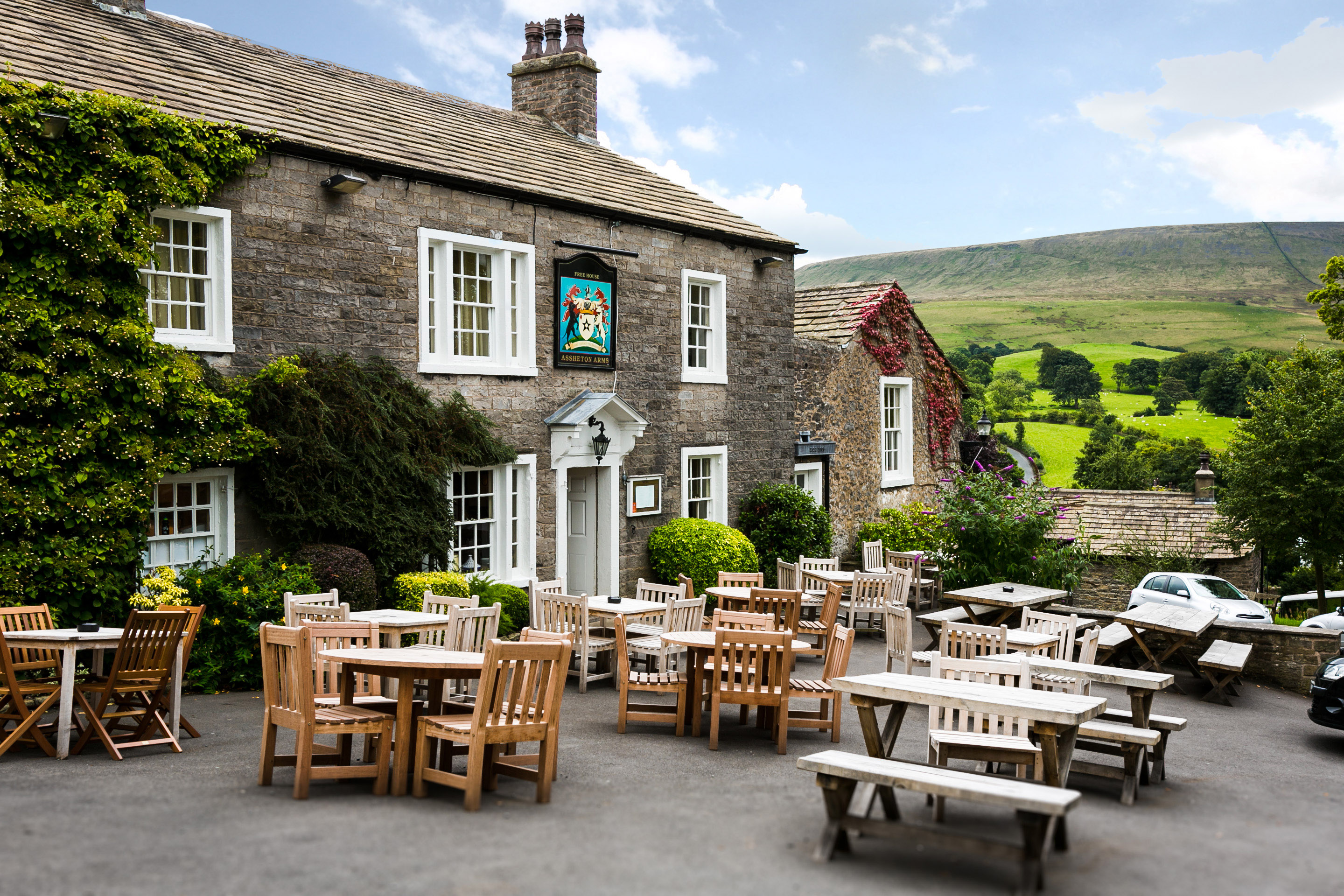
Explore
Ribble Valley is the perfect place for you to escape the frantic pace of every day, whatever the time of year. Forget those diaries and deadlines and head straight to your perfect getaway that's waiting to be discovered.
See for yourself how a visit to Ribble Valley can revitalise your senses with its spectacular commanding fells and lush green valleys revealing your love of the great outdoors. Walk in the footsteps of Romans, Normans and literary masterminds who once set foot in this historic landscape. Explore quaint market towns such as Clitheroe and Longridge and picturesque villages brimming with individual shops, historic treasures and tales.
Fabulous food
Savour the fresh flavours of tempting treats and feasts for food lovers as Clitheroe develops as Lancashire's Food Town and Ribble Valley is fast becoming known for our local culinary delights and first class hospitality. Try the Ribble Valley Food Trail or perhaps come and sample the Clitheroe Food Festival in August.
Planning your holiday
As you journey through this website you'll unearth everything there is to know about planning your perfect holiday or short break in rural heaven.
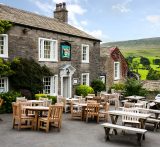
Explore
Love Ribble Valley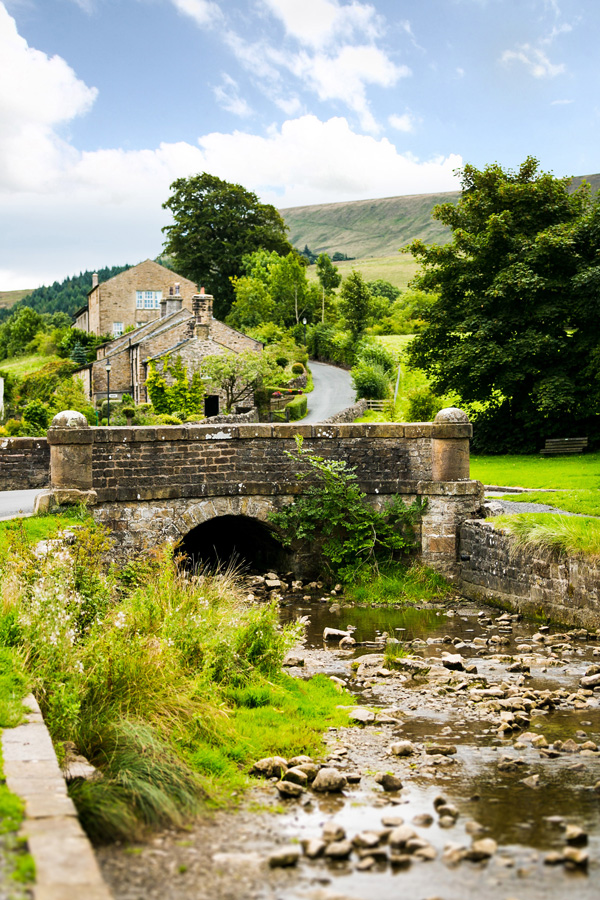
Village Life
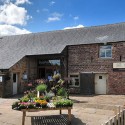 Bashall Eaves - Beautiful Bashall Eaves sits in the heart of this Area of Outstanding Natural Beauty, four miles west of Clitheroe town centre. Standing on the banks of the River Hodder and four miles west of Clitheroe town centre, you will find the picturesque village of Bashall Eaves, at the very heart of this Area of Outstanding […]
Bashall Eaves - Beautiful Bashall Eaves sits in the heart of this Area of Outstanding Natural Beauty, four miles west of Clitheroe town centre. Standing on the banks of the River Hodder and four miles west of Clitheroe town centre, you will find the picturesque village of Bashall Eaves, at the very heart of this Area of Outstanding […]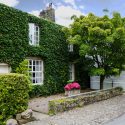 Bolton-By-Bowland - Magnificent church of St Peter and Paul and the remains of the 13th Century market cross and stocks are two spots to see in this pretty village. The Open Gardens Weekend is a highlight of the summer when many interesting gardens within the parish attract visitors from around the area. Places Nearby: Holden Clough […]
Bolton-By-Bowland - Magnificent church of St Peter and Paul and the remains of the 13th Century market cross and stocks are two spots to see in this pretty village. The Open Gardens Weekend is a highlight of the summer when many interesting gardens within the parish attract visitors from around the area. Places Nearby: Holden Clough […]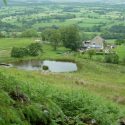 Chaigley - Home to the Higher Hodder Bridge, Chaigley is a starting point for many explorations into the stunning Forest of Bowland. The riverside footpath between the lower and higher Hodder bridges is particularly beautiful. Let the kids paddle in the shallow reaches of the river in summer, a honeypot for family picnics and relaxation. Places Nearby: […]
Chaigley - Home to the Higher Hodder Bridge, Chaigley is a starting point for many explorations into the stunning Forest of Bowland. The riverside footpath between the lower and higher Hodder bridges is particularly beautiful. Let the kids paddle in the shallow reaches of the river in summer, a honeypot for family picnics and relaxation. Places Nearby: […]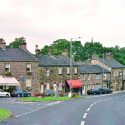 Chatburn - Chatburn is situated in a hollow between the two ridges, which slope towards the River Ribble just off the A59 Clitheroe to Skipton road on the outskirts of Clitheroe. It is thought that the village derived its name from St Ceatt or Chad. The stately spire of the Parish Church dominates the building, which was […]
Chatburn - Chatburn is situated in a hollow between the two ridges, which slope towards the River Ribble just off the A59 Clitheroe to Skipton road on the outskirts of Clitheroe. It is thought that the village derived its name from St Ceatt or Chad. The stately spire of the Parish Church dominates the building, which was […]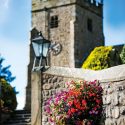 Chipping - Ancient cobbled streets and attractive 17th century buildings, Chipping village is filled with character and has won many Best Kept Village competitions over the years. Located on the south-western edge of the Forest of Bowland, Chipping offers warm and friendly country pubs and restaurants, such as Gibbon Bridge, which is also a hotel, offering luxurious […]
Chipping - Ancient cobbled streets and attractive 17th century buildings, Chipping village is filled with character and has won many Best Kept Village competitions over the years. Located on the south-western edge of the Forest of Bowland, Chipping offers warm and friendly country pubs and restaurants, such as Gibbon Bridge, which is also a hotel, offering luxurious […]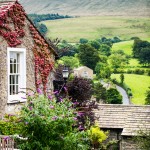 Downham - Downham lies at the foot of Pendle Hill, in the southern section of the Forest of Bowland Area of Outstanding Natural Beauty and close to the market town of Clitheroe. It is often hailed as the most beautiful village in Lancashire, with unrivalled views absent of overhead wires, satellite dishes, roadside signage and TV aerials. […]
Downham - Downham lies at the foot of Pendle Hill, in the southern section of the Forest of Bowland Area of Outstanding Natural Beauty and close to the market town of Clitheroe. It is often hailed as the most beautiful village in Lancashire, with unrivalled views absent of overhead wires, satellite dishes, roadside signage and TV aerials. […]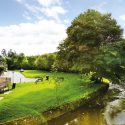 Dunsop Bridge - There are numerous places that claim to be located at the very centre of the United Kingdom but, according to the Ordnance Survey, the official centre of the Kingdom is in the parish of Dunsop Bridge just a short walk from the village centre. Dunsop Bridge is the perfect place for those who love to […]
Dunsop Bridge - There are numerous places that claim to be located at the very centre of the United Kingdom but, according to the Ordnance Survey, the official centre of the Kingdom is in the parish of Dunsop Bridge just a short walk from the village centre. Dunsop Bridge is the perfect place for those who love to […]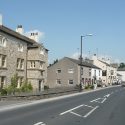 Gisburn - On the verge of the Lancashire and Yorkshire borderline you’ll find a unique village that straddles the A59 between Clitheroe and Skipton. This is Gisburn, where a walk along the cobblestones of the wide main street will take you towards the historic Parish Church. Gaze in amazement at the stunning original Norman stained glass windows […]
Gisburn - On the verge of the Lancashire and Yorkshire borderline you’ll find a unique village that straddles the A59 between Clitheroe and Skipton. This is Gisburn, where a walk along the cobblestones of the wide main street will take you towards the historic Parish Church. Gaze in amazement at the stunning original Norman stained glass windows […]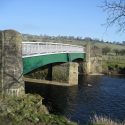 Grindleton - Perched on a hillside, commanding extensive views of the picturesque Ribble Valley, stands Grindleton. With the River Ribble in its sights it’s only a short trip out of Clitheroe. This small rural community once relied heavily on weaving and spinning. Set amidst rolling pastures the church of St. Ambrose once served a population of hand-weavers; […]
Grindleton - Perched on a hillside, commanding extensive views of the picturesque Ribble Valley, stands Grindleton. With the River Ribble in its sights it’s only a short trip out of Clitheroe. This small rural community once relied heavily on weaving and spinning. Set amidst rolling pastures the church of St. Ambrose once served a population of hand-weavers; […]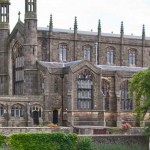 Hurst Green - This village marks the very start of the famous Tolkien Trail walk, where author J.R.R. Tolkien was inspired by the local landscape and went on to create the ‘Lord of the Rings’ and ‘The Hobbit.’ This trail starts and finishes at the Shireburn Arms, a beautiful and dog-friendly country pub standing in the heart of […]
Hurst Green - This village marks the very start of the famous Tolkien Trail walk, where author J.R.R. Tolkien was inspired by the local landscape and went on to create the ‘Lord of the Rings’ and ‘The Hobbit.’ This trail starts and finishes at the Shireburn Arms, a beautiful and dog-friendly country pub standing in the heart of […] Mellor - Situated on a high ridge overlooking the low-lying area of the Fylde. Mellor Moor was the site of a Roman encampment, an outpost of the one at Ribchester. St. Mary’s Church was built 1829 and is of particular interest and possesses a very fine peal of Guildford Chimes. The internal woodwork is of English oak […]
Mellor - Situated on a high ridge overlooking the low-lying area of the Fylde. Mellor Moor was the site of a Roman encampment, an outpost of the one at Ribchester. St. Mary’s Church was built 1829 and is of particular interest and possesses a very fine peal of Guildford Chimes. The internal woodwork is of English oak […]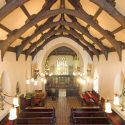 Mitton - Situated on a limestone rise above the River Ribble, the tiny hamlet of Mitton is home to some of the most popular restaurants in the area. To name a few, the Aspinall Arms is the perfect stop off for cyclists, walkers and anglers, serving delicious food and drink, whilst looking across at the medieval All […]
Mitton - Situated on a limestone rise above the River Ribble, the tiny hamlet of Mitton is home to some of the most popular restaurants in the area. To name a few, the Aspinall Arms is the perfect stop off for cyclists, walkers and anglers, serving delicious food and drink, whilst looking across at the medieval All […] Newton-in-Bowland - The journey to this attractive spot over Waddington Fell provides views of breathtaking beauty. John Bright the Quaker spent two years of his early life here in the heart of the Hodder Valley. The Friends Meeting House dates from 1767. Places Nearby: Parkers Arms
Newton-in-Bowland - The journey to this attractive spot over Waddington Fell provides views of breathtaking beauty. John Bright the Quaker spent two years of his early life here in the heart of the Hodder Valley. The Friends Meeting House dates from 1767. Places Nearby: Parkers Arms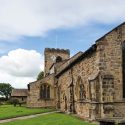 Ribchester - The village of Ribchester is a significant Roman site, having been the location of a Roman Cavalry fort called Brematennacum. The famous Ribchester Hoard was discovered back in 1796 by a 13year old boy whilst digging in his garden. He came across an unusual collection of items, one being a bronze cavalry parade helmet. This […]
Ribchester - The village of Ribchester is a significant Roman site, having been the location of a Roman Cavalry fort called Brematennacum. The famous Ribchester Hoard was discovered back in 1796 by a 13year old boy whilst digging in his garden. He came across an unusual collection of items, one being a bronze cavalry parade helmet. This […]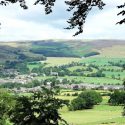 Sabden - Sabden is another beautiful village nestled under Pendle Hill, and is the perfect place to begin your exploration of this stunning landscape. Pendle is steeped in history and legends and is renowned for its connections to the trials of the witches in the 1600s and also as the place where George Fox, a leading Quaker […]
Sabden - Sabden is another beautiful village nestled under Pendle Hill, and is the perfect place to begin your exploration of this stunning landscape. Pendle is steeped in history and legends and is renowned for its connections to the trials of the witches in the 1600s and also as the place where George Fox, a leading Quaker […]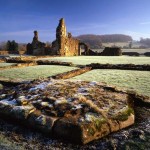 Sawley - Nestled deep within the Forest of Bowland, an Area of Outstanding Natural Beauty, is the picturesque village of Sawley. It is here that you will find the remains of a Cistercian abbey, founded in 1148, set close to the River Ribble and overlooking a beautiful backdrop of dramatic hills. The award-winning Spread Eagle at Sawley […]
Sawley - Nestled deep within the Forest of Bowland, an Area of Outstanding Natural Beauty, is the picturesque village of Sawley. It is here that you will find the remains of a Cistercian abbey, founded in 1148, set close to the River Ribble and overlooking a beautiful backdrop of dramatic hills. The award-winning Spread Eagle at Sawley […]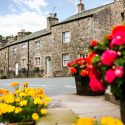 Slaidburn - Since the early 19th century, the village of Slaidburn has remained untouched and is a serene and peaceful place. Hidden away by the Bowland fells, the village contains many stone cottages, set in a blissful location close to the banks of the River Hodder. Located close to Gisburn Forest, you will find that Slaidburn is […]
Slaidburn - Since the early 19th century, the village of Slaidburn has remained untouched and is a serene and peaceful place. Hidden away by the Bowland fells, the village contains many stone cottages, set in a blissful location close to the banks of the River Hodder. Located close to Gisburn Forest, you will find that Slaidburn is […]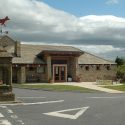 Tosside - On the edge of the Forest of Bowland, half in Lancashire and half in Yorkshire, Tosside may be some way from the main visitor centre, but is nevertheless well worth a visit. The Gisburn Forest features cycle trails and good footpaths to suit every ability. United Utilities have recently opened a footpath circling the Stocks […]
Tosside - On the edge of the Forest of Bowland, half in Lancashire and half in Yorkshire, Tosside may be some way from the main visitor centre, but is nevertheless well worth a visit. The Gisburn Forest features cycle trails and good footpaths to suit every ability. United Utilities have recently opened a footpath circling the Stocks […]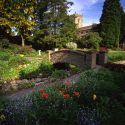 Waddington - A regular winner of Lancashire’s Best Kept Village Award, this pretty Village with a babbling brook and coronation gardens perches on the outskirts of Clitheroe. Waddington is a conservation area and a great place to explore and discover heritage features like St Helen’s Church, an attractive Victorian rebuild. Waddington has a number of great places […]
Waddington - A regular winner of Lancashire’s Best Kept Village Award, this pretty Village with a babbling brook and coronation gardens perches on the outskirts of Clitheroe. Waddington is a conservation area and a great place to explore and discover heritage features like St Helen’s Church, an attractive Victorian rebuild. Waddington has a number of great places […] Whitewell - Known locally as ‘Little Switzerland’, where the river Hodder winds its way along the wooded valley. A church, an inn and a few cottages grace this very attractive spot. Cave dwellers lived here around 1000 BC and Middle Bronze Age relics were found in the ‘Fairy Holes’ cave a few years ago. Roman remains have […]
Whitewell - Known locally as ‘Little Switzerland’, where the river Hodder winds its way along the wooded valley. A church, an inn and a few cottages grace this very attractive spot. Cave dwellers lived here around 1000 BC and Middle Bronze Age relics were found in the ‘Fairy Holes’ cave a few years ago. Roman remains have […]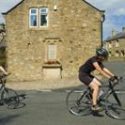 Wiswell - A small village on the edge of Whalley and home to another popular inn, Wiswell is said to have taken its name from Old Molly’s Well, later known as the wise woman’s well. The first record of Wiswell is in a charter of 1193, in the reign of Richard the First. The village’s most famous […]
Wiswell - A small village on the edge of Whalley and home to another popular inn, Wiswell is said to have taken its name from Old Molly’s Well, later known as the wise woman’s well. The first record of Wiswell is in a charter of 1193, in the reign of Richard the First. The village’s most famous […] Worston - A village seemingly far removed from the nearby A59. Worston is a peaceful place with one street and a welcoming hostelry and many links to the past. A pre-historic burial ground was found on Worsaw Hill. In 1778, workmen widening the road to Chatburn found 1,000 Roman silver Denarii. Fragments of the ancient Sawley Abbey […]
Worston - A village seemingly far removed from the nearby A59. Worston is a peaceful place with one street and a welcoming hostelry and many links to the past. A pre-historic burial ground was found on Worsaw Hill. In 1778, workmen widening the road to Chatburn found 1,000 Roman silver Denarii. Fragments of the ancient Sawley Abbey […]
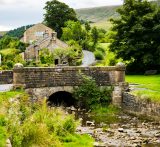
Village Life
Love Ribble Valley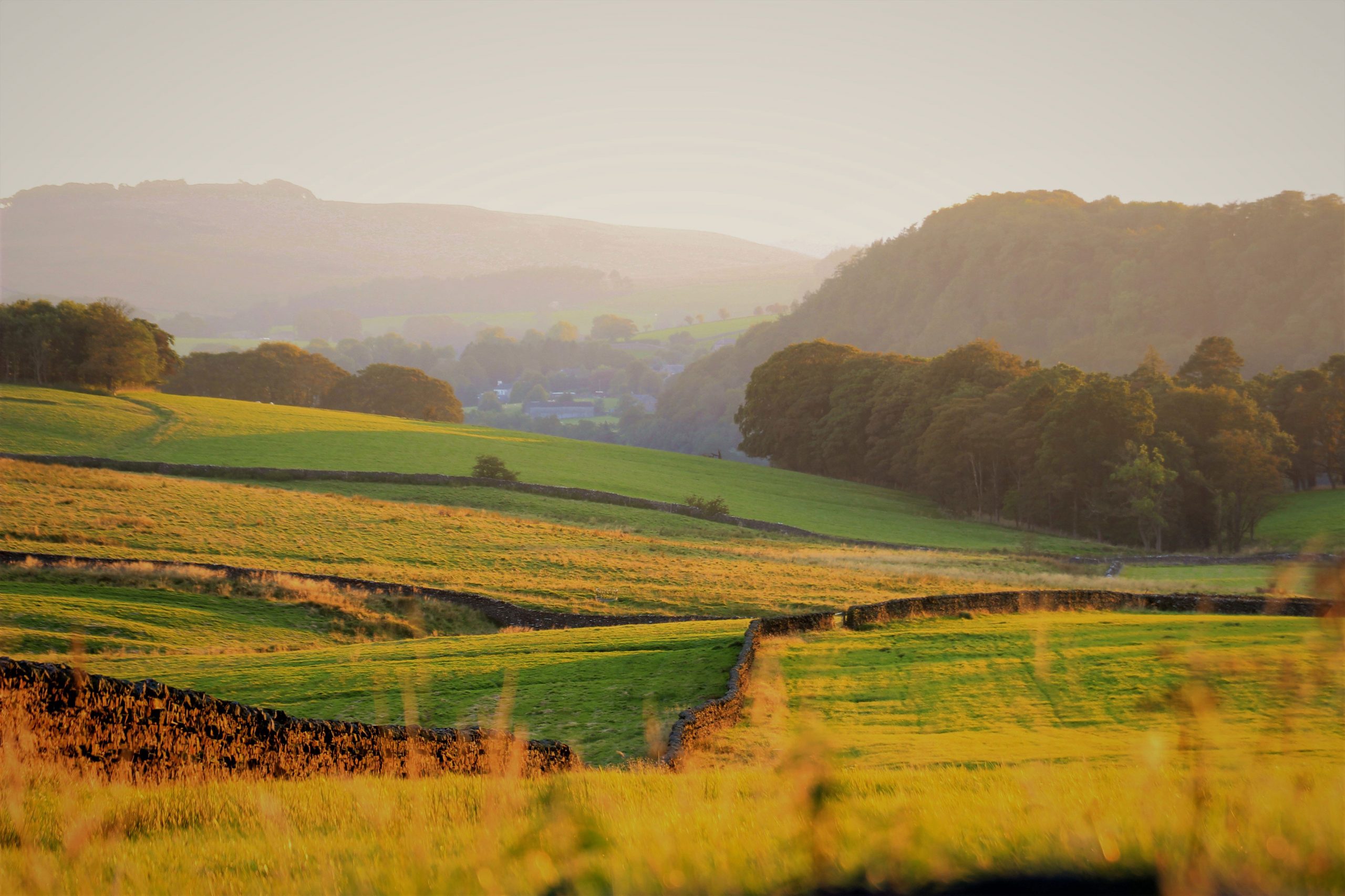
Hodder Valley
River Hodder
The River Hodder is one of the most peaceful and unspoilt rivers in the north of England. It begins life high in the fells, 400m above sea level, where it drains much of the Forest of Bowland Area of Outstanding Natural Beauty and feeds the large Stocks Reservoir, which provides much of Lancashire’s water.
The river rises on White Hill and flows for approximately twenty-three miles to the mighty River Ribble, entering at its largest tributary, and passing through the Duchy Estate owned by Her Majesty the Queen. It takes in the picturesque villages of Slaidburn and Dunsop Bridge, the spectacular Inn at Whitewell and the Stonyhurst estate, where it is believed author J.R.R. Tolkien was inspired to create the 'Lord of the Rings’ and 'The Hobbit’, in which several local names feature. The river then passes under the iconic Cromwell’s Bridge, which dates from 1561 and earned its name after Oliver Cromwell’s 8,000 strong Parliamentary army crossed the bridge during his march from Skipton to intercept the Royalists in 1648.
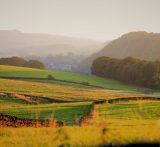
Hodder Valley
Love Ribble Valley
Gisburn Forest & Stocks Reservoir
Gisburn Forest is situated in the upper Hodder Valley, near to Stocks Reservoir. Over 1200 hectares in size, and therefore the largest wooded area in Lancashire, it is home to coni fers, spruce and a huge variety of wildlife. Over recent years, Gisburn has become an increasingly important recreation destination. There is ample parking and picnicking sites for visitors, as well as a café and toilets at the Gisburn Forest Hub from where you can enjoy way-marked walks and cycle routes or explore the extensive network of public footpaths.
fers, spruce and a huge variety of wildlife. Over recent years, Gisburn has become an increasingly important recreation destination. There is ample parking and picnicking sites for visitors, as well as a café and toilets at the Gisburn Forest Hub from where you can enjoy way-marked walks and cycle routes or explore the extensive network of public footpaths.
Most walking and biking trails start from the Hub, the main car park. It’s also the base for a range of sporting and other events including mountain biking, trail running and orienteering. The Hub is also where the annual Cloudspotting festival takes place, a fantastic family music festival with a growing reputation in the UK’s festival scene which takes place in midsummer. Find out more and book tickets at www.cloudspotting-festival.co.uk
There are 16km of mountain bike trails across the forest which have been created by Forestry England and a volunteer group of trail builders. After deciding which level of track you would like to take at the Skills Hoop at the Hub, set off to traverse the wide range of trails, from beginner through to expert, all while enjoying the exhilaration of fresh air and beautiful surrounding forest. The forest also has a newly accredited Dark Sky Discovery Site, one of five within the Forest of Bowland. This means that the night skies over the Forest of Bowland AONB have been recognised as some of the darkest in England and so are ideal for stargazing. There are regular events for the keen stargazer or those who wish to become acquainted more with our night sky, run by local stargazing companies. For more details got to www.forestofbowland.com.
The forest has a huge array of habitat types that support varied wildlife. These include a wide range of bird species including important birds of prey such as Hen Harriers and the Short-Eared Owl. There is a continuing programme of planting more broadleaved trees across the forest, to help continue the diversification of habitats as well as provide visual improvements to the landscape.
Find out more about what Gisburn Forest has to offer at. www.forestryengland.co.uk .
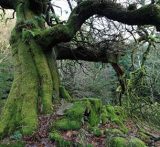
Gisburn Forest & Stocks Reservoir
Love Ribble Valley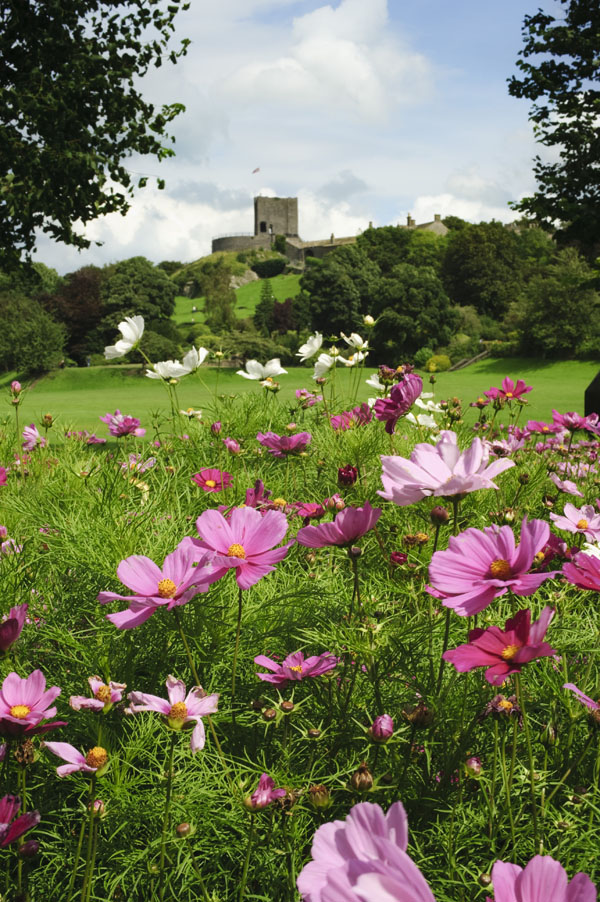
Clitheroe
Clitheroe is a vibrant market town with a bustling high street and side streets full of character, revealing independent shops, galleries and eateries and more.
Historic Market Town
Take a walk around the historic market town of Clitheroe, and you’ll no doubt be enticed by its inviting cafes and characterful boutiques. Clitheroe is a vibrant market town with a bustling high street and side streets full of character, 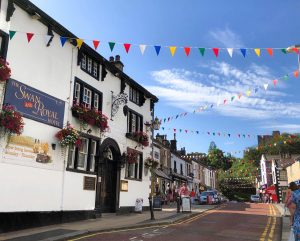 revealing independent shops, galleries, eateries and more. Noteworthy amongst the longstanding independent shops is Cowman’s Famous Sausage Shop, whose reputation for its sausages spreads far and wide.
revealing independent shops, galleries, eateries and more. Noteworthy amongst the longstanding independent shops is Cowman’s Famous Sausage Shop, whose reputation for its sausages spreads far and wide.
From five generations of butchers, Cowman’s sausages are, and always have been, made with locally reared, high quality meat. Check out their huge array of different sausages on offer, as well as their sausage of the month! Another must for wine lovers is D Byrne’s Wine Merchants. Beyond the impressive first room is a series of small catacombs of wine cellars containing thousands of bottles from all over the world. Expert, unpretentious, and a treasure trove of red, white and fizz oozing with tradition and spirit.
Offering panoramic views over the area, Clitheroe Castle crowns the town from an elevated position. Down below, there are countless places to discover—whether you enjoy browsing the shops, arts and culture, delving into history or sampling fantastic food and drink. Clitheroe is certainly a place to add to your must-visit list. Click here for more information
Food and Drinks Galore
While walking through Clitheroe, you are bound to notice the aroma of freshly-ground coffee which emanate from the delightful Exchange
Great for family-friendly dining is the nearby Emporium, a lavishly converted old Methodist chapel comprising three expansive storeys for

eating, drinking and shopping. Here Parisian café culture meets relaxed wining and dining. All in all, Clitheroe has a restaurant to tempt any taste bud, spanning from Greek to Italian to American cuisine.
Why not check out our food website www.ribblevalleyfoodheaven.com
So Much to See and Do
For a marvellous mix of live entertainment and culture, it’s worth paying a visit to The Grand. Since opening its doors in early 2008, the state-of-the-art venue has diversified its programme and gained its name as one of the North West’s best-loved medium-size cultural venues. In addition, there is the Everyman Cinema at Holmes Mill, where there will be film screenings suitable for audiences of all ages.

If you’d rather make the most of the great outdoors, you can find parks and picnic places throughout Clitheroe. Edisford Bridge, for example, boasts one of the prettiest riverside spots in town, equipped with tables, a miniature steam railway, and an ice cream van. Plus, there’s plenty of clear, fresh water in which to paddle, of course! Clitheroe’s very own beach never fails to please.
A Very Special Heritage
Clitheroe is also home to an early medieval castle which has been lovingly preserved and developed over time into a fabulous hub of history. It is one of the oldest buildings in Lancashire, now a Grade 1 listed building, and noted as one of the smallest Norman keeps in Britain. Respectfully maintained over the years and developed over time, visitors can explore the castle keep for free and enjoy spectacular views across the valley. There is also an interactive museum for which there is a small entry fee. Not to be forgotten are the splendid 16-acre castle grounds, which host a bandstand, playground and Lancashire’s one and only labyrinth.
As well as ascending to the castle keep and admiring the breathtaking views, there is the option to discover even more of Clitheroe’s heritage by taking part in the fascinating Town Trail. The mile-long walk suitable for all the family takes you on a journey across time a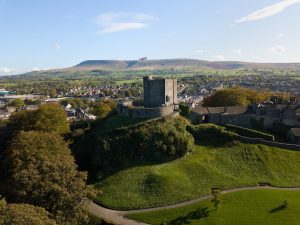 nd place, from the 19th century market place, to rows of Victorian terraces, to pubs dating back to the 16th century. Copies of the trail can be obtained at the Visitor Information Centre at the Platform Gallery.
nd place, from the 19th century market place, to rows of Victorian terraces, to pubs dating back to the 16th century. Copies of the trail can be obtained at the Visitor Information Centre at the Platform Gallery.
If you fancy using Clitheroe as a starting point to explore further afield, then the Ribble Valley Sculpture Trail is the adventure for you. Launched in 1993, this trail incorporates over 20 different works of art, taking you through woodlands, grasslands, Brungerley Park and Cross Hill Quarry. Not only will you enjoy views of the Bowland hills, but you may also spot some fascinating local wildlife—kingfishers, and even otters!
If you want to find out more about the thriving market town of Clitheroe and what there is to see and do here, simply head to the Platform Gallery and Tourist Information Centre, near the bus and train interchange, where you should find all the information you’re looking for.
Special Places
Clitheroe Castle
Holmes Mill
Edisford Bridge
Platform Gallery
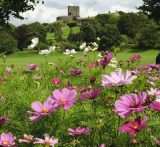
Clitheroe
Love Ribble Valley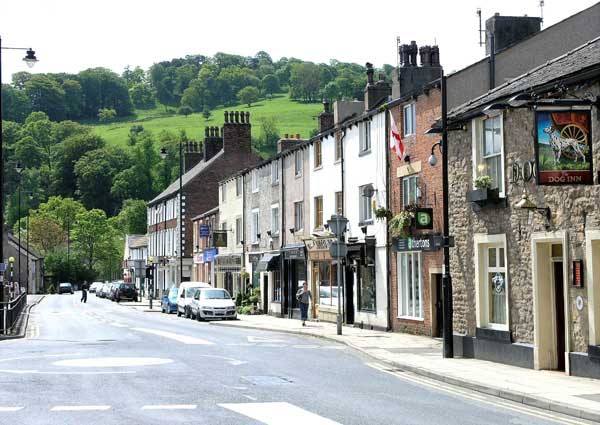
Whalley
Nestled at the foot of Whalley Nab, alongside the River Calder, lies the village of Whalley. It’s a place steeped in history, rural charm and natural beauty.
Whalley
Nestled at the foot of Whalley Nab, alongside the River Calder, lies the village of Whalley. It’s a place steeped in history, rural charm and natural beauty.
Fascinating history
One of the village’s most popular places to visit is Whalley Abbey, a former Cistercian monastery dating from the 14th century. Today, its stone walls surround a stunning conference centre and retreat including a coffee shop and exhibition centre. While the expansive grounds are open for exploration by day, the Abbey also offers four-star overnight accommodation.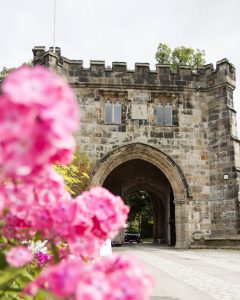
Another visitors’ delight is St Mary & All Saints Church, where a stroll through the pretty churchyard reveals three Saxon crosses dating from 628 AD. Many centuries later, in 1850, construction of Ribble Valley’s viaduct was completed with the aim of carrying the railway over the River Calder. Visible from the streets down below, the viaduct is the longest in Lancashire and has become a landmark of Ribble Valley.
Natural beauty
In addition to charming grade II listed cottages and quaint alleyways, Whalley has an unrivalled natural beauty. Within walking distance lies, for example, Spring Wood—a once monastery-owned woodland that now hosts many a family picnic, forest walk and ice cream purchase!
What makes Spring Wood so special is its rarity; as a semi-natural ancient woodland dating from before 1600, it is one of the very few areas of greenery from this time that were not cleared to make way for agricultural land. Another unique aspect of the wood is its location; from no other place in Ribble Valley are the village of Whalley and the iconic Pendle Hill so easily visible and explorable.
Truly Independent
Along the main street and cobbled side alleys there are numerous small and independent restaurants, bistros, wine merchants and delicatessens just waiting to be discovered. In fact, the village offers some of the finest dining experiences in Ribble Valley, ranging from afternoon teas to authentic Italian restaurants.
Whalley Wine Shop has won the Best Local Wine Shop in the Decanter World Wine Awards. Now in its 16th year, the Decanter World Wine Awards (DWWA) is the world’s largest and most influential wine competition. Judged by the top wine experts from around the globe, the DWWA is trusted internationally for its rigorous judging process, and celebrates creativity, drive and success in the wine industry. Visitors to The Whalley Wine Shop will experience a friendly and welcoming atmosphere from passionate and enthusiastic staff and much choice in wines, champagnes, spirits, craft beers and much more.
Rural charm
They say good things come in small packages—this certainly applies to the village of Whalley. As well as its café and culinary culture, Whalley has a thriving retail scene. Dotted throughout the village are—among others—exquisite jewellers, hair and beauty salons, and designer clothing boutiques. Worth a special mention is the multi-award-winning outdoor clothing specialist Whalley Warm & Dry. Here you will find highly-qualified staff who not only provide expert advice, but also measure and adapt walking footwear for optimum comfort.
Relatively new to Whalley is Ribble Valley’s only 24/7 luxury gym experience with state-of-the-art equipment. Run by PLM the ethos of the gym is a holistic approach to training, focusing on preventative health and wellbeing, education, goal setting and positive lifestyle changes.
Adjacent to PLM is another welcome new feature in Whalley, the Salvage House Collective, who describe themselves as the funkiest bunch of independent retailers, a barber & other creatives, and who are based in a converted industrial unit in Whalley. Dubbed ‘The Consortium of Cool’, here you will also find a regular pop-up bar with music and street food.
Whalley Local History Podcast
Want to learn more about the history of Whalley? Follow the link and listen to the podcast of Jean Lord narrating the history of the village on Spotify now.
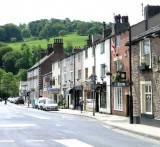
Whalley
Love Ribble Valley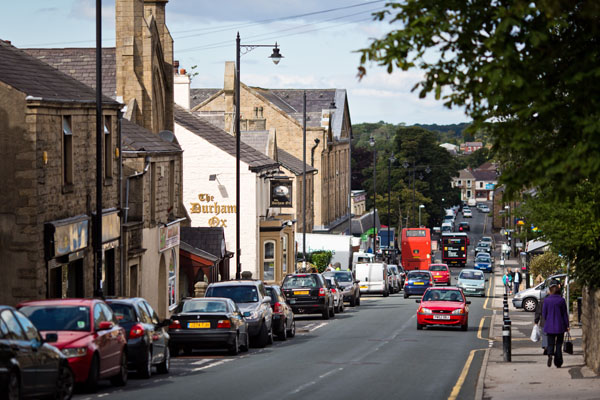
Longridge
Longridge is so aptly named as it sits on the hilltop, on a long ridge, with stunning views across the surrounding countryside.
Longridge
Longridge is so aptly named as it sits on the hilltop, a long ridge, with stunning views across the surrounding countryside. The ideal place to begin your visit is the Heritage and Visitor Centre located in the Old Station, right in the centre of the town. Open from 10am to 4pm Monday to Friday, here you can find out about Longridge’s fascinating history, browse the old photographs on the town archive, or view one of their regularly changing exhibitions. You will be able to pick up local walking guides, history trails and a variety of information to help you discover more about this attractive town.
Much of this former cotton mill town was built from the distinctive sandstone quarried locally, and so much of the town has remained largely unchanged in appearance since the 1800s. One of the most historically significant parts of the town is Club Row, a row of twenty solid workmen’s cottages built when Longridge was just a village, and textiles were the big employer. A blue plaque explains their significance and this terrace, erected between 1774 and 1804, and is believed to be the oldest surviving example of properties built by a building society in the world.
The main street, Berry Lane is very much the hub of the town with a thriving selection of shops where you will discover a wide variety of charmingly unique art, crafts, homeware, jewellery, gifts, designer clothing, shoes and accessories. There is a pleasant blend of longstanding family businesses and more recent arrivals.
One welcoming inn, located just on the outskirts of Longridge, is the Derby Arms. Its atmospheric tap room, feature fireplaces and larger central bar create a series of ambient spaces perfect for drinks with friends or a special dining experience. Close by is Little Farm shop and café, a great place to buy locally sourced produce and stop a while for some home-made cake and tea.
If you are seeking self-catering accommodation in the heart of the nearby open countryside then the Shippon is a good example of a beautifully appointed, quality property available to let for a short break or longer holiday.
Longridge is lucky enough to have one of Lancashire’s quirkiest cinemas, the Palace, which started life as a weaving shed and during its time has been a music hall, roller skating rink, a bingo hall and, finally a cinema in the 1970s. The cinema has been recently refurbished in a clever restoration which retains the character of the building whilst hosting a modern and diverse range of entertainment. Owner Lara Hewitt has been keen to retain some of the old-world charm of the cinema where hot tea is still served in real mugs and the national anthem is played before each film. Ribble Valley is very proud to host one of the last remaining independent cinemas.
Two major events form an important part of the town’s heritage, Longridge Field Day is an annual celebration, community run, and complete with imaginative floats, fancy dress and decorations throughout the town. It provides an opportunity to witness a great traditional event and is held in June.
Goosnargh and Longridge Show which is held on in the second Saturday each July is another important event and a celebration of food and farming in the locality. The show is a great day out for people of all ages, and a great emphasis is placed on providing entertainment for young visitors.
Click here find out more about events in Ribble Valley
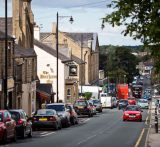
Longridge
Love Ribble Valley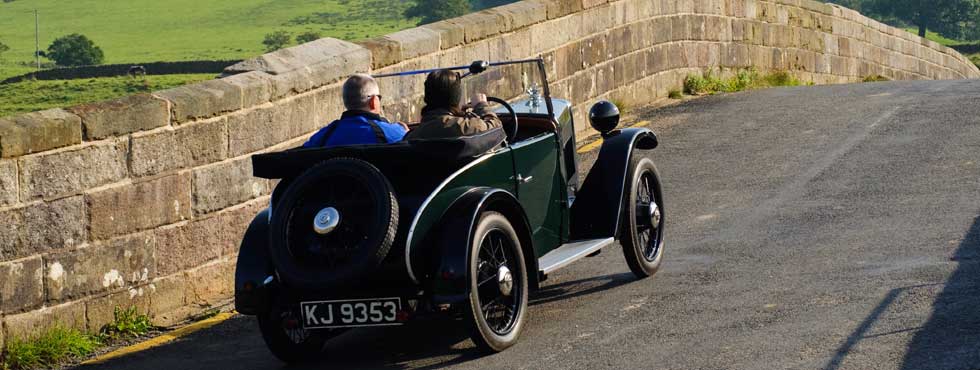
Living Heritage
A designated Area of Outstanding Natural Beauty, Ribble Valley is infused with a wonderfully rich heritage. From early Roman settlements, to more recent sites of Victorian industry, the borough’s landscape reveals glimpses of almost every period of British history. While statues and abbeys remain standing from centuries gone by, more recently constructed museums and trails bring the past to life via informative signage and interactive displays. Here are just some of our major heritage features:
Stonyhurst
Founded in 1593, Stonyhurst College attracts visitors from far and wide. Its breathtaking grounds and magical interior make it the perfect location for taking a step back in time. Interestingly, the independent school even served as a place of literary inspi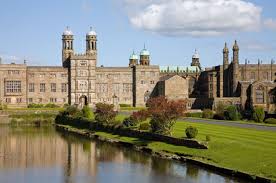 ration for the author J.R.R. Tolkien. A further reason to visit Stonyhurst is its Old Chapel Museum, which exhibits treasured artefacts pertaining to the likes of Shakespeare and more. Open to the public, the museum is accessible on selected dates throughout the academic year.
ration for the author J.R.R. Tolkien. A further reason to visit Stonyhurst is its Old Chapel Museum, which exhibits treasured artefacts pertaining to the likes of Shakespeare and more. Open to the public, the museum is accessible on selected dates throughout the academic year.
For more information go to Stonyhurst
Clitheroe Castle
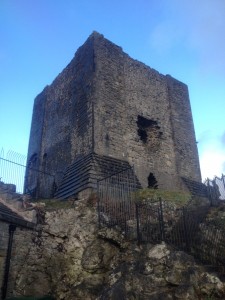 It’s free to climb onto the Castle Walls and to the top of the Castle Keep in Clitheroe where you can enjoy spectacular views across the town and the whole Ribble Valley. Children can get their hands on history in the interactive galleries and exhibitions at the award winning Clitheroe Castle Museum, where there’s a year round programme of themed activities for all ages. Using screens and computer technology, you’ll be taken on a journey through 350 million years of history, heritage and geology of the local area. It’s also here that you can find out about the facts, fables and folklore of the Pendle Witches, who were involved in the most famous witchcraft trails in English History. To find out more go to Clitheroe Castle
It’s free to climb onto the Castle Walls and to the top of the Castle Keep in Clitheroe where you can enjoy spectacular views across the town and the whole Ribble Valley. Children can get their hands on history in the interactive galleries and exhibitions at the award winning Clitheroe Castle Museum, where there’s a year round programme of themed activities for all ages. Using screens and computer technology, you’ll be taken on a journey through 350 million years of history, heritage and geology of the local area. It’s also here that you can find out about the facts, fables and folklore of the Pendle Witches, who were involved in the most famous witchcraft trails in English History. To find out more go to Clitheroe Castle
Whalley Abbey
In the tranquil grounds of Whalley Abbey atmospheric ruins of a large Cistercian monastery can be discovered with daily tours of the ruins available with a costumed guide in a monk’s habit. Further up the Ribble Valley, Sawley Abbey is another historic site where you can wander
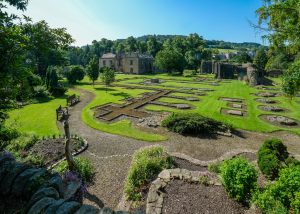
Ribble Valley
among the remains of a Cistercian abbey founded way back in 1148.
Pendle Witches
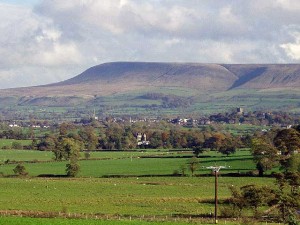 Dominating landscape to the south of Ribble Valley is the mysterious Pendle Hill, an area steeped in the history of witchcraft. In 1612, ten people were executed having been found guilty of witchcraft in this area. The evidence given against the so-called ‘Pendle Witches’ was based on memories, hearsay and superstition, and would not be considered in a modern court. But life was very different 400 years ago; religious persecution was rife and people lived in wretched fear and poverty. Now, over 400 years later, you have the chance to follow the journey taken by the accused witches, to learn about their lives and the trial that made British history. From the untamed moorlands of Pendle Hill, you can take a journey of discovery through Lancashire’s dramatic and historic past.
Dominating landscape to the south of Ribble Valley is the mysterious Pendle Hill, an area steeped in the history of witchcraft. In 1612, ten people were executed having been found guilty of witchcraft in this area. The evidence given against the so-called ‘Pendle Witches’ was based on memories, hearsay and superstition, and would not be considered in a modern court. But life was very different 400 years ago; religious persecution was rife and people lived in wretched fear and poverty. Now, over 400 years later, you have the chance to follow the journey taken by the accused witches, to learn about their lives and the trial that made British history. From the untamed moorlands of Pendle Hill, you can take a journey of discovery through Lancashire’s dramatic and historic past.
Roman Ribchester
 A museum steeped in historical significance, which dates back over 100 years. It has benefitted from heritage lottery funding and European grants in order to make it a modern day exhibition of the Roman history in Ribble Valley. The museum contains a magnitude of excavated artefacts that date back to the Roman settlements of Ribchester. The original Roman site, known as Bremetennacum Veteranorum, was as established in the early 70s AD. As well as the various artefacts that the museum displays visitors can also view a new interactive 3D model of the site. A number of special events are also held at various times throughout the year, which can include full reconstructions of Roman times. For more information go to Roman Museum
A museum steeped in historical significance, which dates back over 100 years. It has benefitted from heritage lottery funding and European grants in order to make it a modern day exhibition of the Roman history in Ribble Valley. The museum contains a magnitude of excavated artefacts that date back to the Roman settlements of Ribchester. The original Roman site, known as Bremetennacum Veteranorum, was as established in the early 70s AD. As well as the various artefacts that the museum displays visitors can also view a new interactive 3D model of the site. A number of special events are also held at various times throughout the year, which can include full reconstructions of Roman times. For more information go to Roman Museum
Browsholme Hall
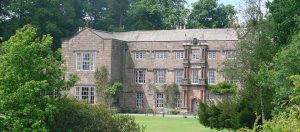 Did you know that Browsholme Hall is the oldest family home in Lancashire? Dating back 14 generations, the privately-owned Elizabethan home offers guided tours of its magnificent interior and external architecture. From May to September, the public can visit every Wednesday from 11:30am to 4:00pm, with guided tours taking place at hourly intervals in the afternoon. Over the Christmas period, guests can discover how beautifully the house has been decorated for the festive season.
Did you know that Browsholme Hall is the oldest family home in Lancashire? Dating back 14 generations, the privately-owned Elizabethan home offers guided tours of its magnificent interior and external architecture. From May to September, the public can visit every Wednesday from 11:30am to 4:00pm, with guided tours taking place at hourly intervals in the afternoon. Over the Christmas period, guests can discover how beautifully the house has been decorated for the festive season.
For more information go to Browsholme Hall
Holmes Mill
A stone’s throw from Clitheroe Castle, you will find the former textile mill, Holmes Mill, first established in 1823. In recent years Holmes Mill has been developed into a second-to-none leisure venue. Surrounded by gorgeous décor and original Victorian-style features, including a

Ribble Valley
large mill engine, visitors can explore everything the mill has to offer, from a food court and hotel, to a beer hall housing what is said to be the longest bar in Britain.
For more information go to Holmes Mill
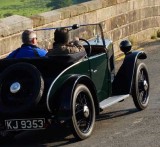
Living Heritage
Love Ribble Valley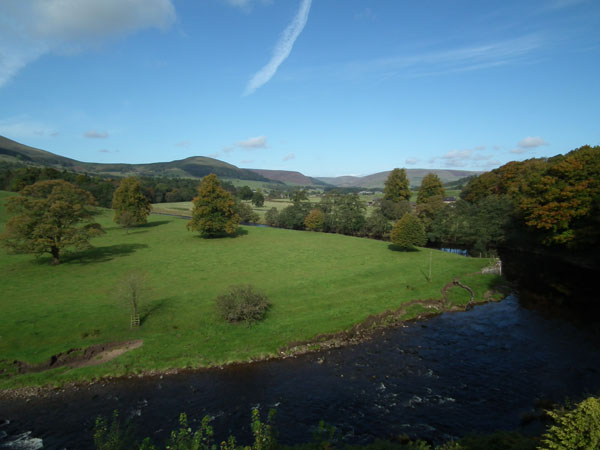
Forest of Bowland
Designated as an Outstanding Area of Natural Beauty the Forest of Bowland is a unique and magical place in the Ribble Valley. The distinctive character and natural beauty of the area form some of the most distinctive and important landscapes in the United Kingdom. Every season brings into this area its own colours and atmosphere and it becomes possible to escape into the peace and tranquillity of these truly beautiful places year round.
The Forest of Bowland was designated as an AONB in 1964 and covers over 312 square miles of rural landscape. It is home to a wide range of flora and wildlife plus contains numerous historical and cultural associations. Much of the area is important for the breeding of upland birds and notable wildflower meadows and woodlands are present.
The role of people in the Forest of Bowland is also an important and attractive aspect for the area. This living landscape has been formed over centuries due to the close relationship between human activity and the land, from dry-stoned walls, hedgerows and barns, to open moors and grazed fields. The local food and drink produce is important for supporting the many farmers who manage the beautiful landscape and supporting the local economy.
The main importance for the Forest of Bowland, as a source of support for people’s livelihoods and enjoyment, and as a unique and protected landscape, is to remain a place to enjoy and keep social.
A full list of events can be found in the Festival Bowland programme.
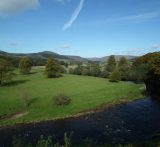
Forest of Bowland
Love Ribble Valley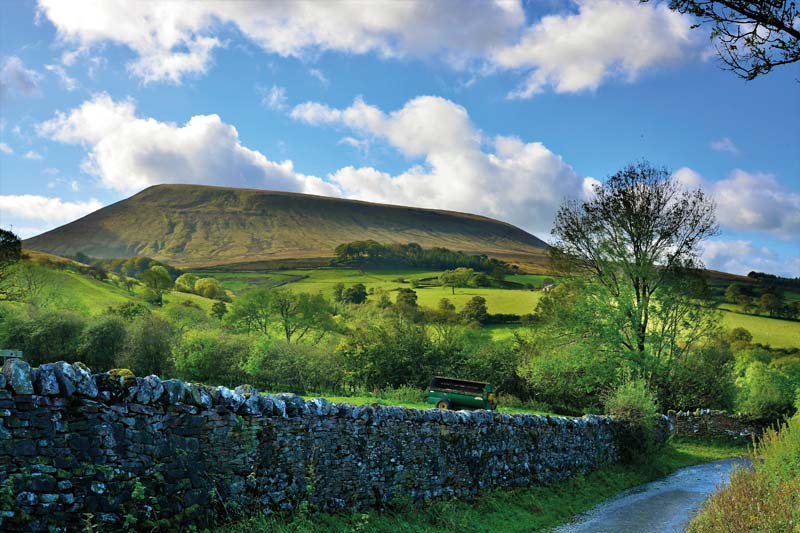
Pendle Hill
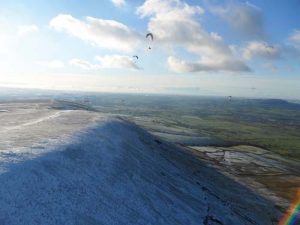 The majestic Pendle Hill towers over the picturesque towns and villages of East Lancashire and Ribble Valley. For generations this iconic landscape feature has been an inspiration to both visitors and local people. One of the most famous was George Fox; the founding father of the Quaker movement, who revealed that it was here in the early 1600s where he was inspired to start what is now a worldwide religious movement. Fox wrote: “As we travelled, we came near a very great hill, called Pendle Hill, and I was moved of the Lord to go up to the top of it; which I did with difficulty, it was so very steep and high. When I was come to the top, I saw the sea bordering upon Lancashire. From the top of this hill the Lord let me see in what places he had a great people to be gathered.” Today Pendle remains strongly linked to the Quakers, giving its name to one of their centres for religious and spiritual study and contemplation near Philadelphia, Pennsylvania, in the United States.
The majestic Pendle Hill towers over the picturesque towns and villages of East Lancashire and Ribble Valley. For generations this iconic landscape feature has been an inspiration to both visitors and local people. One of the most famous was George Fox; the founding father of the Quaker movement, who revealed that it was here in the early 1600s where he was inspired to start what is now a worldwide religious movement. Fox wrote: “As we travelled, we came near a very great hill, called Pendle Hill, and I was moved of the Lord to go up to the top of it; which I did with difficulty, it was so very steep and high. When I was come to the top, I saw the sea bordering upon Lancashire. From the top of this hill the Lord let me see in what places he had a great people to be gathered.” Today Pendle remains strongly linked to the Quakers, giving its name to one of their centres for religious and spiritual study and contemplation near Philadelphia, Pennsylvania, in the United States.
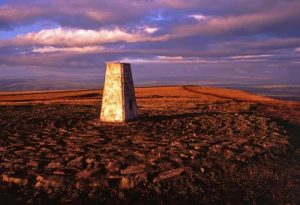
Beneath the hill lie pretty villages which reveal a history of intrigue and witchcraft , spanning 400 years. At that time the area was regarded by the authorities as a wild and lawless region: “fabled for its theft , violence and sexual laxity, where the church was honoured without much understanding of its doctrines by the common people. Twelve alleged witches lived in the area surrounding Pendle Hill and were charged with the murders of ten people by ‘the use of witchcraft ’. All but two were tried at Lancaster Assizes in August 1612. The trials of the Pendle witches are among the most famous witch trials in English history, and some of the best recorded of the 17th century. The trials allowed the testimonies of children in a court of law for the first time in history, which went on to influence rules of law across the world.

Pendle Hill is an exhilarating and fantastic walk. Astonishingly, on a clear day and just off the summit, you can see Blackpool Tower and the sea. Regular climbers of Pendle report that on clear days you can also spot the Welsh landmark of Penmaenmawr. And from the 557-metre summit you can see two of Yorkshire’s famous three peaks - Ingleborough and Whernside. There are several routes to the summit, one of the most popular starts in the pretty village of Downham where you will also find the Assheton Arms, for ‘fuelling up’ for the jaunt. Pendle Hill’s relative isolation on the edge of the Pennines and the Bowland Fells makes it appear very dominant in the landscape. A multi- million-pound Heritage Lottery award has set in motion an exciting scheme of improvements to create enhanced access to the hill along with better interpretation aimed at unlocking some of the legends and secrets yet to be discovered.
Downham Circular Walk 3 777.94 KB 1595 downloads
At 557 metres above sea level Pendle Hill does not quite qualify for ‘mountain’...